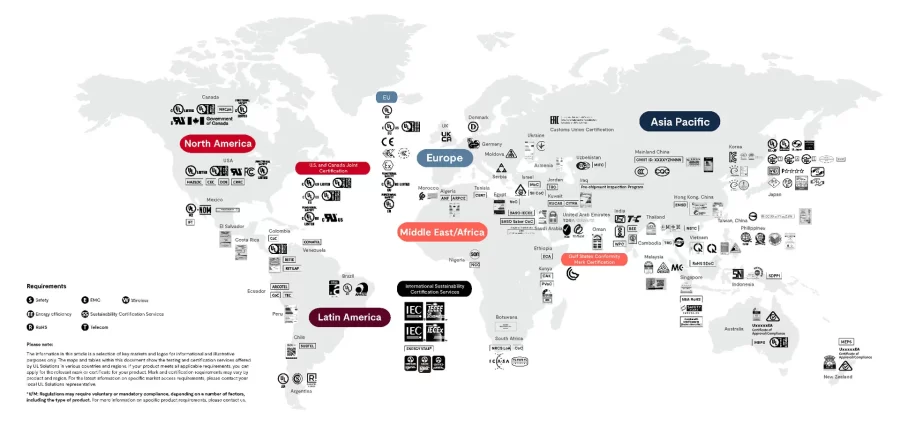Lithium batteries power our everyday lives from our smartphones, to our laptops, to our electric cars. While the models we buy are mostly completely safe for use, lithium batteries themselves can be quite dangerous. If a liquid-state electrolyte gets punctured, if the battery is overcharged, or if it falls victim to thermal runaway it can explode or catch fire. For this reason, batteries are heavily regulated by many different agencies and regulatory groups around the world. In this article, we’ll go over the major players and regional differences to help you understand the basics of lithium battery standards and certifications.
Global Standards
1. UL (Underwriters Laboratories) Standards
UL standards are widely recognized across North America and many other regions and set rigorous safety standards for lithium-ion batteries that focus on fire resistance, thermal stability, and electrical performance. They have specific standards that ensure the safety of lithium-ion cells in consumer electronics (UL 1642), apply to battery pack durability (UL 2054), apply to EV battery safety (UL 2580), and apply to portable lithium batteries (UL 62133-2).
2. IEC (International Electrotechnical Commission) Standards
IEC plays a critical role in setting international benchmarks. They ensure a global safety standard for rechargeable batteries (IEC 62133-2), industrial energy storage batteries (IEC 62619), EV batteries (IEC 62660), and automatic controls for battery safety systems (IEC 60730).
3. ISO (International Organization for Standardization) Certifications
ISO sets international quality and safety standards. They ensure quality management in production (ISO 9001), environmental management in battery manufacturing and disposal (ISO 14001), and functional safety for EV batteries (ISO 26262).
4. SAE (Society of Automotive Engineers) Standards
SAE provides important guidelines for lithium batteries in transportation industries. This includes safety requirements for EV battery systems (SAE J2929), abuse testing procedures for high-voltage batteries (SAE J2464), and performance testing methods (SAE J1798).
5. UN/DOT (United Nations and Department of Transportation) Regulations
Given the risks associated with lithium battery transport, UN/DOT regulations ensure safe shipping and handling. They require batteries to undergo rigorous testing for shock, vibration, and pressure (UN 38.3), regulate lithium battery air and ground transportation (49 CFR 173.185), and govern air transport of lithium batteries under the International Air Transport Association (IATA DGR).
Regional Differences
While global standards exist, different codes and policies are prioritized by different regions, often causing delays in international battery trade.

For example, while most major manufacturers try to follow global standards to be compliant for international trade, you might find that in China GB/T Standards are considered the most important. You will also find in China that a China Compulsory Certification (CCC) is required for imported battery products and that standards tend to prioritize EV battery recycling programs.
In the U.S., UL and SAE standards dominate. Compliance with Federal Aviation Administration (FAA) and Department of Transportation (DOT) rules is essential. In the European Union, the Battery Regulation (EU 2023/1542) enforces strict sustainability and recycling mandates. In Japan and South Korea, Japan Industrial Standards (JIS) and Korean Industrial Standards (KS) regulate safety and performance.
In the future, you will likely see more global standardization in the international lithium battery trade. In our next article, we’ll go into detail about how these standards are evolving and what we can expect in the near future.












2 thoughts